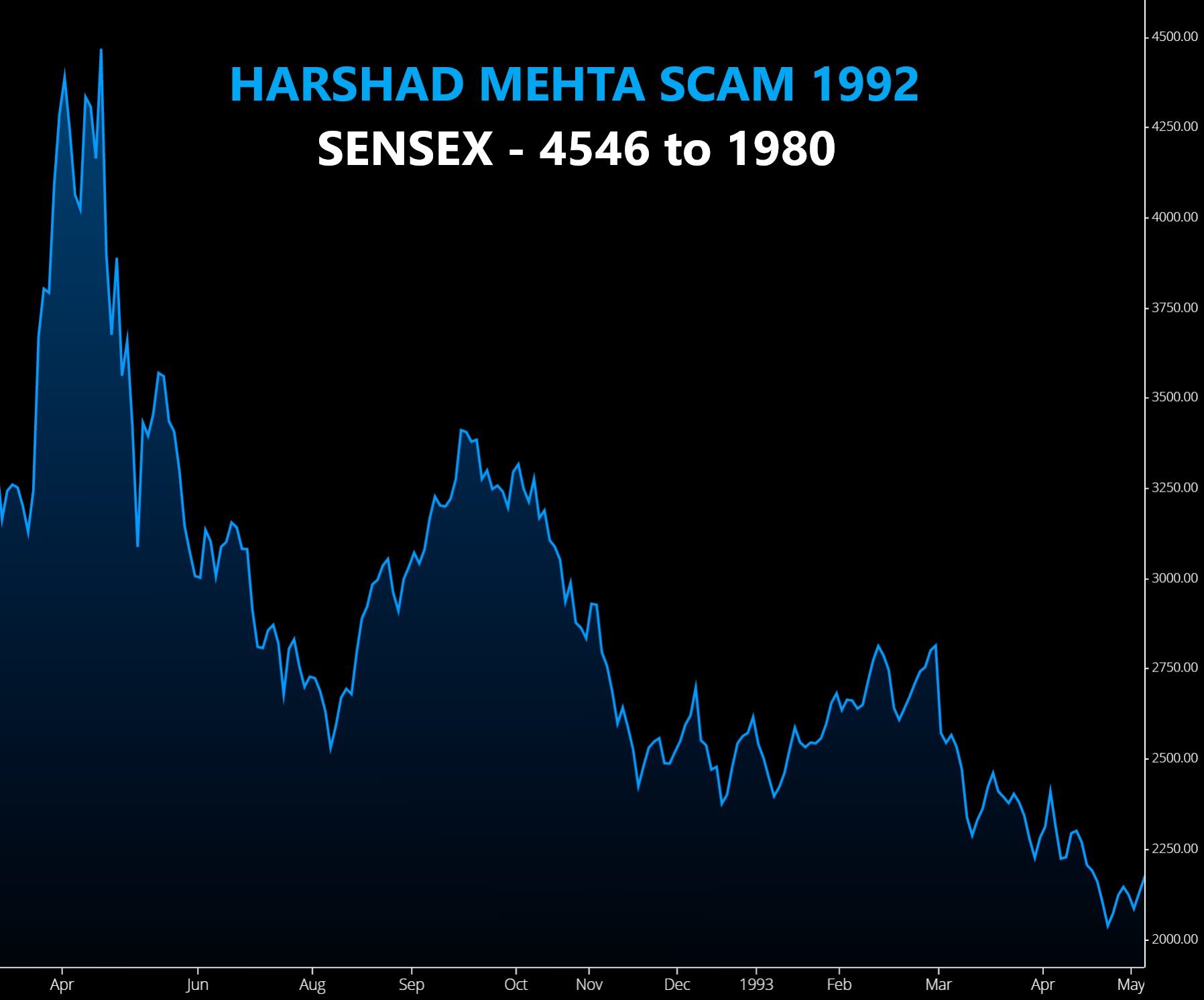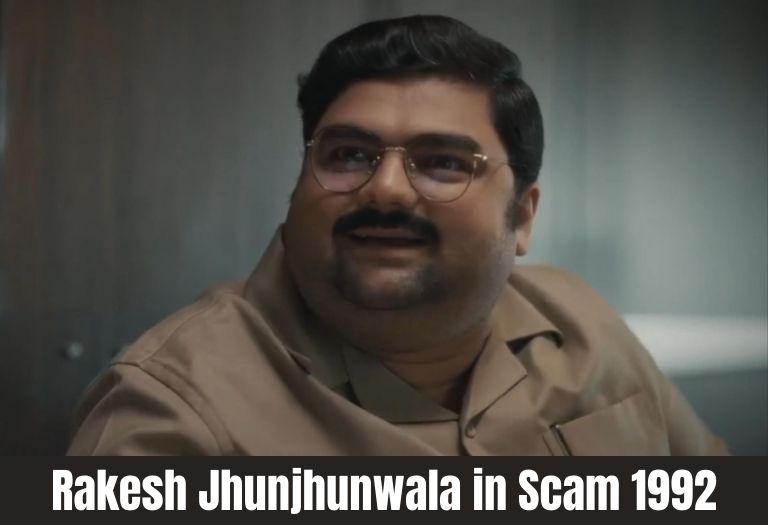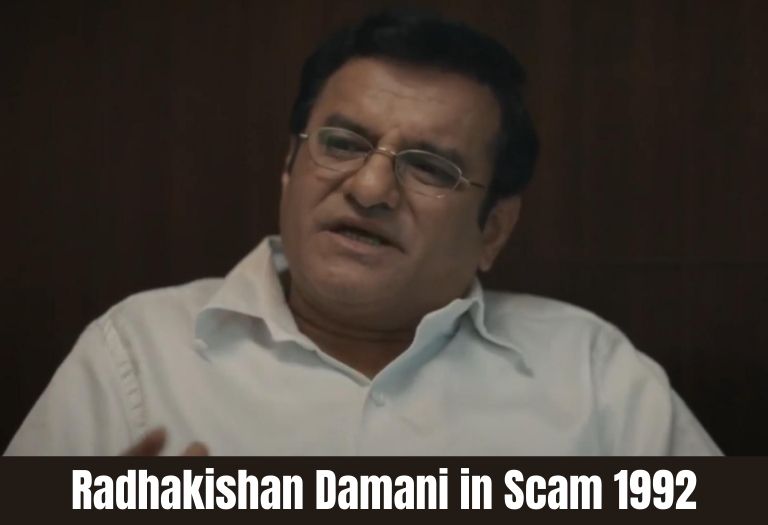The Harshad Mehta Scam is once again in news, thanks to Hansal Mehta’s web-series ‘Scam 1992’.
It’s a fantastic series with brilliant performances from the entire cast – especially Pratik Gandhi, who lives the role of Harshad Mehta.
The charismatic performance is so powerful that mid-way through the series, you start rooting for Harshad. You want him to get out of the mess he has created.
If you haven’t watched it, watch Scam 1992 online on SonyLiv.
Harshad Mehta Scam 1992

It is called the ‘Harshad Mehta Scam’, but it wasn’t only him. One individual cannot possibly dupe the entire system.
Large banks, institutions, other brokers and even top-level politicians were involved in what went on to become India’s biggest financial scam.
Let’s try to simplify the case.
When you buy or sell a stock, you do it through a stock broker (like Zerodha) – who is a middleman between the buyer and the seller.
Similarly, back in the 1980s and 1990s, when a bank required money – they would often take short term loans from other banks. As a guarantee, they would keep ‘government securities’ (for example, Government Bonds) with the bank which was giving the loan.
When it was time to return the money (usually 15 days), the bank would take the government securities back – and also pay interest for the short term loan.
This was called the ‘Ready Forward Deal’.
Since there were several banks that often required short term loans, there were brokers who acted as middlemen between two banks.
Harshad Mehta – The Middleman
Harshad Mehta was one such broker – who often finalized such short-term loans between two banks.
This is where things get interesting.
We are talking about an era where most transactions were maintained on physical books. The use of technology and computers wasn’t widespread. Internet was almost non-existent and quick communication wasn’t easy either.
There were several loopholes in the system, which Harshad Mehta misused. He was able to do this because he was a well-known broker – with name, fame and big political connections.
Mehta would first find a bank that required a loan and take the government securities from them. Next, he would find another bank which was willing to lend money and take cash from them.
Not in the bank’s name, but his name!
The transaction was supposed to happen like this:
- Bank 1: Needs a loan, gives government securities to Bank 2 as guarantee.
- Bank 2: Needs to give out loans to earn interest income, gives cash directly to Bank 1.
Simple and straight forward.
Instead, we had a middleman like Harshad Mehta, who kept both the securities and cash with himself – before finalizing the deal.
The short period of time when Harshad had cash – he would use it to invest in the stock market. Since he was directly taking cash from the banks in his name, he had a lot of cash.
This was the kind of money which the market had never seen. It destroyed the bears and inflated the stock prices to crazy levels.
The Viscous Cycle
Mehta kept rotating the cash and became the big bull of the stock market.
Take cash from one bank, invest in the stock market. When the time came to return the money, he would take cash from another bank and return it. This cycle continued for a long time.
As Mehta’s connections and ambitions grew, more cash began to flow in. The stock market kept sky-rocketing. Banks trusted him because he returned their money on time.
As this viscous cycle continued, Mehta got richer and more powerful. From buying cars that were never before seen on Indian roads, to buying the biggest of houses – Mehta became the king of the stock market. A true rags to riches story, which inspired millions of people across the country.
This is when greed for more, began to get the better of him.
The market as we all know – goes through its usual ups and downs. When the market would correct in the short term, there were times when Mehta did not have money to return to the bank.
When he desperately needed more money, he hatched a plan which eventually led to his downfall.
Bank Receipts (BR)
When a bank needed a short term loan, they wouldn’t transfer the ‘Government Securities’ they held. Instead, they gave a receipt which was called as ‘Bank Receipt’ (BR).
These BR’s were confirmation receipts for both banks. That one bank has got the guarantee and other has received the loan.
Harshad used this system to his advantage and started using fake bank receipts to take more money from the lending banks.
This was a clear-cut scam, a fraud of epic proportions which led to his downfall.
Too much money was invested in the stock market, too much was at stake and a day came when Harshad could no longer return the money on time.
The story of this scam was broken by Suchetaa Dalal on Times of India.
News of financial fraud was terrible news for the stock market. The market began to crash and the valuations of Harshad Mehta’s holdings began to plummet too.
While his rise to the top was rather quick, the downfall was even faster. As the scam broke out, the mass-hero became a mass-villain. Overnight.
Simple Real Life Example
During the peak of the bull run, before the Harshad Mehta scam was made public – many people took loans to invest in the stock market.
Let’s take an example to understand this better:
- Since the stock market was performing well and many stocks were doubling within a few days -Rohit believes he can invest and earn quick returns from the market. However, he does not have money.
- He take a ₹ 10,000 loan from a friend and promises to return the money a month later – with 10% interest.
- He invests the money in the market and his stocks begin to perform well. Rohit believes he can earn more from the market. He takes a loan from another friend.
- When it’s time to return the money to the first friend, he is fully invested and does not want to take money out from the market. After all, he is earning 5-10% every day!
- He takes another loan of ₹ 11,000, promises to pay 10% interest after a month and clears his first loan.
- The stock market crashes.
- Rohit has two loans to return. One of ₹ 11,000 and other ₹ 12,100.
- Since his stocks are already below his investment value, he decides not to sell them.
- He takes a bigger loan. To clear his two pending loans, as well as to invest more in the market to recover his losses – which were also from the market.
- He is convinced the market will recover, like it has done several times in the past.
- This becomes a viscous cycle and getting out of it becomes almost impossible.
The above story didn’t just happen during the Harshad Mehta era. It continues to happen even today. Especially during the peak of a bull market.
Thousands of people have taken loans to invest in the stock market and suffered. Many have committed suicide. We do not hear about them, because the amount is usually small.
In Harshad Mehta’s case, his transactions were in hundreds of crores.
Highlights of Harshad Mehta’s Life
- Born in 1954 in the Rajkot district of Gujarat, Harshad spent his childhood in Kandivali (Mumbai) and later moved to Raipur where he did his schooling.
- Harshad was average in studies, but managed to complete his Commerce degree – after which he did a number of sales jobs.
- He later joined New India Assurance Company, and it’s here he got interested in the stock market.
- Mehta started working in a stock brokerage firm – as a ‘jobber’ for a major broker.
- These were his learning years in the stock market – a time when he rose with the market, fell with it – made mistakes, learnt from it and made a name for himself as an extraordinary talent.
- In 1984, Mehta founded his own company under the name ‘Growmore Research and Assets Management Ltd’.
- From here on, he was unstoppable. A true rags to riches tale, where a small-town boy from Raipur became one of the richest men in the country.
- From imported cars to large bungalows, Mehta’s rise was spectacular. At one point in time, he was paying more tax than Dhirubhai Ambani.
- Mehta was touted as the ‘Einstein of the Stock Market’, the ‘Amitabh Bachchan of the Stock Market’ and India’s first ‘Big Bull’.
- While Mehta manipulated the stock price of many companies, the most prominent of them all was of the cement company ‘ACC’. The price of this stock rose from 200 to 9000 in a short period of time – with Mehta justifying the inflated value to his ‘Replacement Cost Theory’ (How much would it cost to setup another company like ACC?).
- Whether it is stock market or life itself – when the rise is too fast, the fall is usually faster. This is exactly what happened with Mehta and his stocks.
- From 1000 points in January 1991 to over 4500 points in April 1992 – the Sensex gave phenomenal returns to traders as well as investors. When interest and greed were at its absolute peak in 1992, the scam broke and Sensex hit a bottom of 2000 points – a year later in April 1993.
- The crash was brutal. Mehta spent 3 months in jail. The nation’s biggest stock market hero, became a villain overnight – when India’s biggest financial scam was unearthed.
- Amidst intense pressure, Mehta, true to his extremely courageous nature, targeted the Prime Minister of the county – PV Narasimha Rao – and accused him of taking ₹ 1 crore as bribe.
- Mehta became a hero once again and got the backing of the opposition who targeted the Prime Minister.
- Even after his jail-term and SEBI banning him, the stock market was close to Mehta’s heart till the very end.
- In the Mid 90s, when very few even had an internet connection – Mehta started his own website and started posting his stock market tips. He was also writing a weekly column for a newspaper.
- In September 1999, the Bombay High Court convicted Harshad Mehta in another case and sent him to 5 years of imprisonment.
- In prison he suffered heart ailments and passed away at the Thane Civil Hospital on December 31 2001 – minutes before the world celebrated a new year.
Bear Cartel: Rakesh Jhujhunwala and Radhakishan Damani
Without Harshad Mehta, we probably wouldn’t know Rakesh Jhunjhunwala as the ‘big bull’ today.
And the owner of the supermarket chain ‘Dmart’, Radhakishan Damani, wouldn’t be one of the richest men in the world either.

Jhunjhunwala and Damani were a part of the ‘bear cartel’ during the bull run.
The biggest and most influential bear among them all was Manu Manek, also known as the ‘Black Cobra’.
The ‘bear cartel’ shorted stocks that were quoting insane valuations and waited. After all, they earn when stocks fall.
In Radhakishan Damani’s own words, “Agar Harshad saat din aur apni position hold kar leta, toh mujhe kathora leke road par utarna padta.” (Had Harshad Mehta held his position for seven more days, I’d have taken a begging bowl and walked on the road).

The bull run ended when Sucheta Dalal broke the scam on Times of India and the stock market crashed.
Harshad Mehta’s stocks fell heavily – and the big bears Radhakishan Damani and Rakesh Jhunjhunwala made huge money.
There is a scene in ‘Scam 1992’ where Damani says he wants to quit trading and become a long-term value investor.
That’s exactly what he did. Not only did he become a very successful investor, but Damani used his gains from the stock market and started ‘Dmart’ which has become a super-successful supermarket chain and made him a multi-billionaire.
Jhunjhunwala too agreed with Damani and said the Sensex would touch 40,000 one day. In his last scene in the series, he says “who knows, I could be the next big bull”.
And that’s exactly what he went on to become.

Great article on Harshad Mehta and the scam he did. He was a genius. It was sad to see his tragic end in the series.
He used the system, but many others during his time did too. But he became bigger than them. So he was brought down.
Very sad. Hope he is resting in peace somewhere out there. His entire life was a non stop run.
An article by Sucheta Dalal. Worth reading.
In the wee hours of December 31, just before the year 2001 came to a close, Harshad Mehta passed away in a jail in suburban Mumbai. It was a tragic and unceremonious end to the man who was the first broker to become a mega star of the Indian capital markets and fire the greed and imagination of every middle class Indian in the early 1990s.
He promised the ultimate rags to riches story — from the small town Raipur boy who was once rusticated from school to Sultan of Dalal Street with all the trappings of wealth such as a fabulous house, a fleet of cars and multiple stock exchange memberships.
Charismatic, ebullient and recklessly ambitious, Harshad Mehta set out to be a role model for investors.
“I thought I’d be like Pied Pier”, he had told a newspaper in 1992, “I thought I can sell dreams… that asset-creation is not a crime, that if you wanted to be Harshad Mehta come to the stock market”.
In June 1992, when he was released after 107 days in custody, he told me “Congratulations, you have broken the story of the decade”. That was Harshad again – willing to revel even in negative publicity. He made a triumphant exit from court, a la Lalu Yadav’s recent jail yatra, amidst a mob of cheering and slogan-shouting investors, who wanted him back in the market, igniting another never-ending bull run.
Instead, his disdain for the means the he employed to achieve his mega ambition, left behind a shattered dream and a tarnished image. He ended his days in judicial custody, and will forever be known as the main architect of the ₹ 50-billion scam – India’s biggest securities scandal.
Instead of fawning epithets such as the Big Bull, or the Amitabh Bachchan / Einstein of the market that were showered on him by his investor fans, he ended his days as a tired scamster, who could not stop trying to pull off the same old quick money schemes.
For a few months after the scam, it almost seemed as though Harshad and his brother Ashwin would remain at center-stage and dominate events. Within weeks after his release he was hogging headlines as the first man ever to claim that he had bribed a sitting Prime Minister. That too was done in typical Harshad fashion – press conferences at the Taj and the Oberoi, high profile lawyers, an editor-turned-MP acting as emcee, the release of audiotapes and the bizarre demonstration of ₹ 10 million being stuffed into a large suitcase.
That too fizzled out, with the Mehta brothers perjuring themselves. However, they clearly got themselves a deal to avoid further harassment by other government agencies in charge of money laundering and such offences. Did the aftermath of the investigation change Harshad’s attitude to business? No way.
Almost every year after 1992, Harshad Mehta has never ceased to attempt a comeback. The problem was that he never changed his formula. He failed to realize that his old magic was not working with investors anymore. At least nowhere near enough to move the market. If the Central Bureau of Investigation is to be believed, Harshad was also continuously funding himself by selling part of his 1992 stock portfolio, which he had not declared to the Custodian appointed by government. In fact, it is the sale of these ‘benami’ shares (shares that were held in street names when he and 19 other entities were notified by the Custodian and their assets impounded) that had put him back in police custody at the time of his death.
Harshad’s problem has always been his flashiness. In 1992, when I broke the story about the ₹ 6 billion that he had swiped from the State Bank of India, it was his visits to the bank’s headquarters in a flashy Toyota Lexus that was the tip off. Those days, the Lexus had just been launched in the international market and importing it cost a neat package.
Even before that he was featured in a video newsmagazine feeding peanuts to bears at a Mumbai zoo to symbolize his victory over the bear-cartel in the stock market.
In fact, for weeks after the scam, he was convinced that he would never have been caught but for the bear cartel.
1997 saw Harshad Mehta making another big comeback attempt. This time as a new age stock market guru. He was among the first to set up his own website to dispense tips. He had also built up a network of senior media managers who gave him the publicity and commissioned him as a columnist.
He also had powerful friends at the helm of the Bombay Stock Exchange with close connections to the regulator. Some of the largest newspapers in the country, including the Times of India where I first wrote the story of the securities scam, were convinced that a Harshad Mehta column was sure to send circulation figures soaring.
Typically, Harshad did not stop at dispensing tips. He had struck a deal to ramp up the prices of several stocks – among these were BPL, Videocon and Sterlite. He had managed to build up quite a speculative bubble and was again the cynosure of investor attention when India’s nuclear tests caused a sudden collapse in prices and his bubble burst.
Brokers who operated for Harshad Mehta were then infamously bailed out at the behest of the Bombay Stock Exchange authorities by opening the trading system in the middle of the night to insert synchronized trades at manipulated prices.
Investigations by the Securities and Exchange Board of India have revealed that Harshad had set up an entire network of investment companies, known as the Damayanti Group to front his market operations. That investigation led to SEBI imposing a lifetime bar against him (he had filed an appeal against the SEBI order).
It is a pity that Harshad’s eternal optimism and furious stream of get-rich ideas were never channeled to more productive use.
When the end came, he had a score of cases filed under different stages of trial and one conviction by the Special Court in the Maruti Udyog case. But the last decade had certainly taken its toll. The sunny optimism and good cheer, was replaced by a more pensive and tired visage.
He not only looked defeated but sources close to him say that he was steadily running out of funds. Most of this was probably due to the realization that with one conviction by the Special Court and another by SEBI, his dreams of coming back to the capital market had ended forever.
Now it is truly over.